Remember when parental supervision meant “be home before dark” and safety regulations were more like gentle suggestions? The 1970s were a magical time when kids roamed neighborhoods freely, nobody wore seatbelts, and what would make modern parents gasp in horror was just another Tuesday afternoon. Take a trip down memory lane with these quintessential ’70s experiences that somehow most of us survived to tell about—though we might scratch our heads now wondering how!
1. Running Behind the DDT Truck
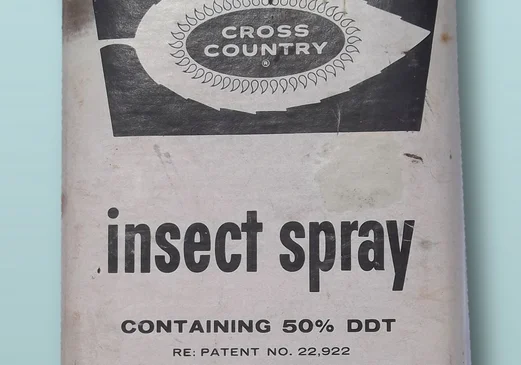
Those summer evenings when the mosquito control truck would slowly roll through the neighborhood, emitting great clouds of DDT fog, were practically a neighborhood event. Kids would dash out of their homes to chase the truck, running and playing in the billowing chemical mist that trailed behind it. Parents often encouraged this activity, believing it helped keep the bugs away from the children, completely unaware that DDT would later be banned as a dangerous pesticide linked to serious health concerns. A writeup by Civil Eats about DDT puts into chilling perspective how dangerous its ingredients are.
The truck driver would sometimes wave or honk, seeing children’s delight in the mysterious fog that enveloped the streets each week. The sweet, chemical smell seemed almost magical, and the way streetlights created eerie beams through the mist made for an adventure unlike any other. Little did anyone realize that this seemingly innocent childhood pastime involved direct exposure to chemicals that would later require hazmat suits to handle properly.
2. Riding in Car Trunks and Pickup Beds
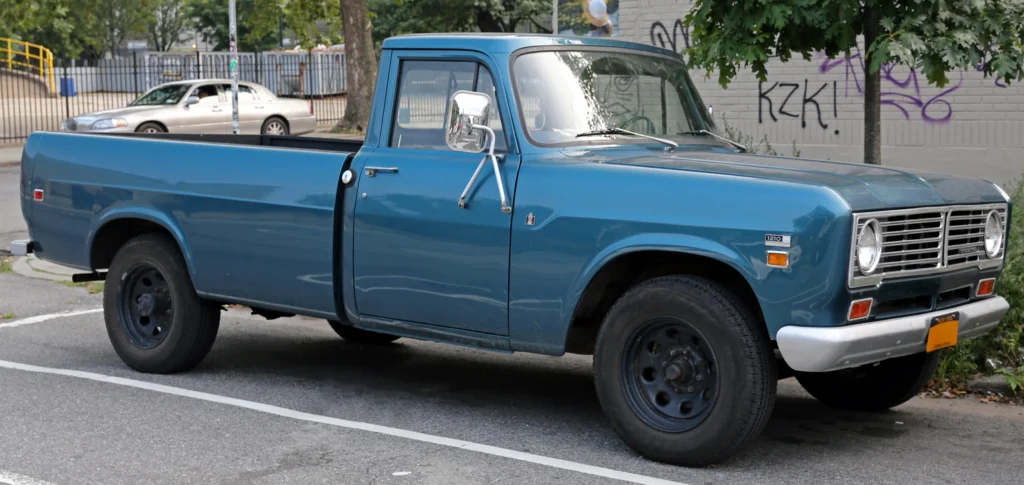
Family road trips often meant creative solutions for fitting everyone in—including piling kids into the back of station wagons or truck beds without a second thought. When cousins came to visit and there weren’t enough seats, some children would eagerly volunteer to ride in the trunk, turning the uncomfortable space into an adventure zone with flashlights and comic books. Pickup trucks routinely carried entire baseball teams in the back, with children dangling their legs off the tailgate and feeling the wind in their hair. RealTruck explores just what the law says about this nostalgic but perilous practice.
Nobody wore seatbelts, and babies sat on mom’s lap in the front seat instead of being secured in car seats. The freedom of bouncing around in the back of a pickup truck at 55 mph on the highway was considered a childhood privilege rather than a death-defying stunt. Those metal-dashboarded cars had no airbags or crumple zones, just hard steel and the misplaced confidence that nothing bad would happen on the way to the drive-in movie theater.
3. Drinking Water from Garden Hoses
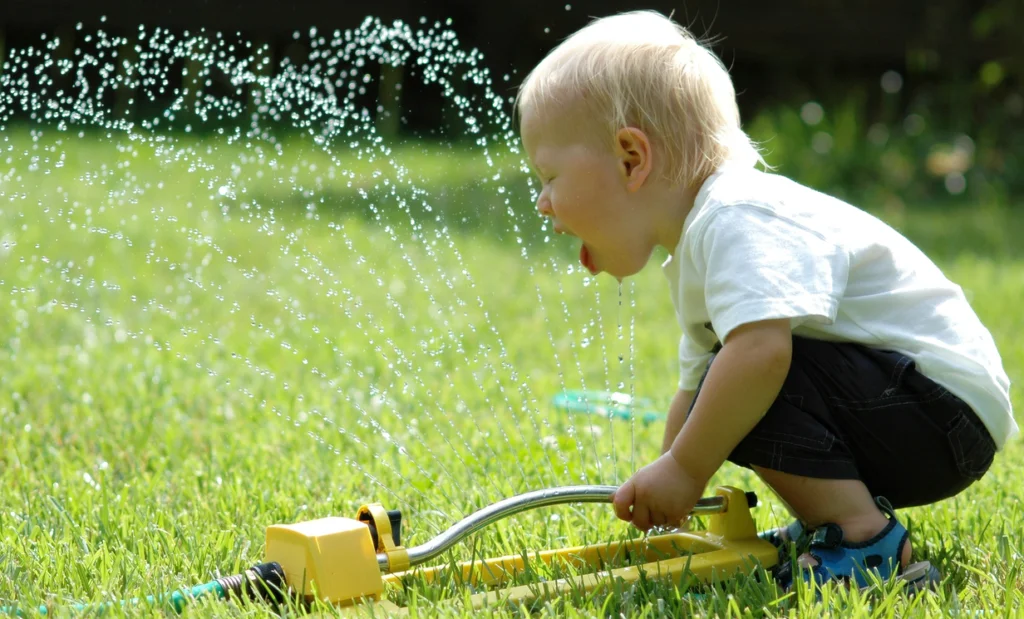
Nothing quenched summer thirst quite like drinking directly from the sun-heated garden hose while playing in the yard. The distinctive rubber taste and metallic tang only added to the experience, becoming the unofficial flavor of summer vacation for an entire generation of children. Nobody considered the chemicals leaching from the hose material, the lead in the brass fittings, or the countless bacteria growing in that constantly damp environment. These days, Cleveland Water advises strongly against taking a swig from the hose.
Parents never provided bottled water for outdoor play—if you were thirsty, you either went inside or drank from the nearest available source. The water would initially come out scalding hot from sitting in the sun, requiring a patient wait before it cooled enough to drink, teaching children the virtue of delayed gratification. Sharing the hose with friends and neighbors was standard practice, with dozens of children putting their mouths on the same spout throughout the day, building immunity the old-fashioned way.
4. Taking Prescription Medication with Zero Child-Proofing

Medicine cabinets were treasure chests of mysterious pills, syrups, and tablets that came in easy-to-open containers with no child-proof caps in sight. Prescription bottles popped open with a simple twist, making them easily accessible to curious little hands that might mistake colorful pills for candy. Parents commonly stored medications on low shelves or in unlocked bathroom cabinets, never imagining that safety regulations would one day mandate special packaging to prevent childhood poisonings.
Liquid medications like cough syrup often tasted like cherry candy, practically inviting overconsumption by children who found them unattended. Aspirin bottles sat on kitchen counters for easy access when someone had a headache, with no consideration for the potential dangers they posed to small children. The poison control center phone number wasn’t magnetized to refrigerators across America yet, and most households handled accidental ingestions with home remedies before considering a trip to the emergency room.
5. Playing Outside Unsupervised Until Dark
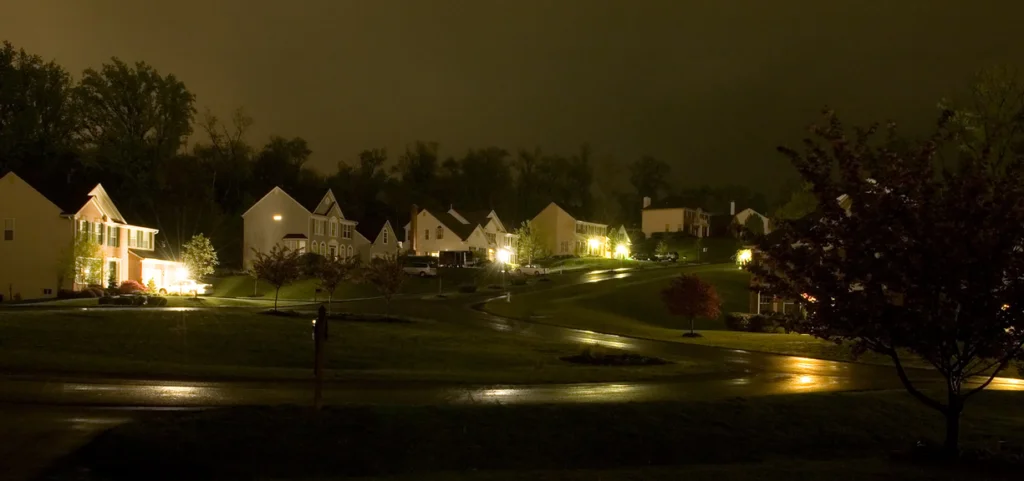
Summer mornings began with children bolting out the door after breakfast with a simple instruction to “be home when the streetlights come on.” Parents had absolutely no idea where their children were for hours at a time, with no cell phones to check in or GPS tracking devices to monitor their whereabouts. Kids would roam miles from home, exploring woods, crossing busy streets, and visiting friends in completely different neighborhoods without any adult guidance.
Entire days were spent constructing forts, riding bikes down dangerous hills, or exploring storm drains—all without a single text message asking about your location. The only rule was to listen for your mother’s distinctive whistle or shout when dinnertime approached, signaling it was time to race home from wherever your adventures had taken you. This independence fostered problem-solving skills and confidence that came from navigating childhood predicaments without immediate adult intervention.
6. Handling Dangerous Chemicals as “Toys”
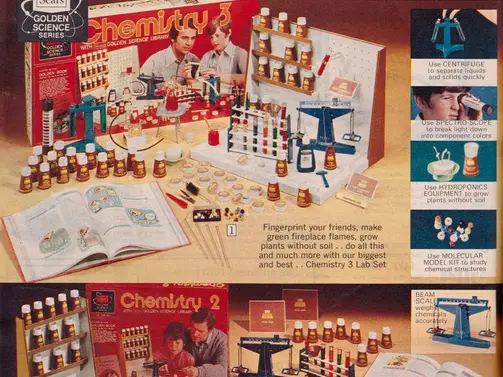
Chemistry sets in the 1970s contained actual chemicals that could explode, burn skin, or release noxious gases when mixed together. Children conducted “experiments” in bedrooms and basements with compounds that would require a hazardous materials license today, all outlined in instruction booklets that treated potential disasters as educational opportunities. Parents viewed minor explosions and strange odors as signs of scientific curiosity rather than causes for emergency evacuation.
Other household chemicals became improvised toys, like mercury from broken thermometers that children would play with, fascinated by the shiny liquid metal rolling across tabletops. Household cleaning products lived under sinks without safety latches, and children regularly handled laundry detergent, bleach, and other caustic substances while “helping” with chores. The idea of childproofing a home was virtually nonexistent, with dangerous substances often stored in food containers or soft drink bottles.
7. Bike Riding Without Helmets

Bicycle helmets were practically unheard of in the 1970s, with children performing increasingly dangerous stunts on bikes, secure in the knowledge that their skulls alone would protect them from concrete. Jumping homemade ramps, racing down steep hills, and weaving through traffic were standard activities that caused parents no concern whatsoever. The wind blowing through your hair as you bombed down the biggest hill in the neighborhood was a sensation of freedom that defined childhood independence.
Bikes themselves were dangerous metal contraptions with minimal brakes, sharp edges, and no reflectors, yet children rode them until the streetlights came on with zero supervision. Injuries were considered character-building experiences rather than preventable accidents, with scars worn as badges of honor among friend groups. When crashes inevitably happened, the standard treatment involved a quick rinse under the garden hose before being told to “shake it off” and get back on the bike.
8. Eating Highly Processed Foods with Questionable Ingredients
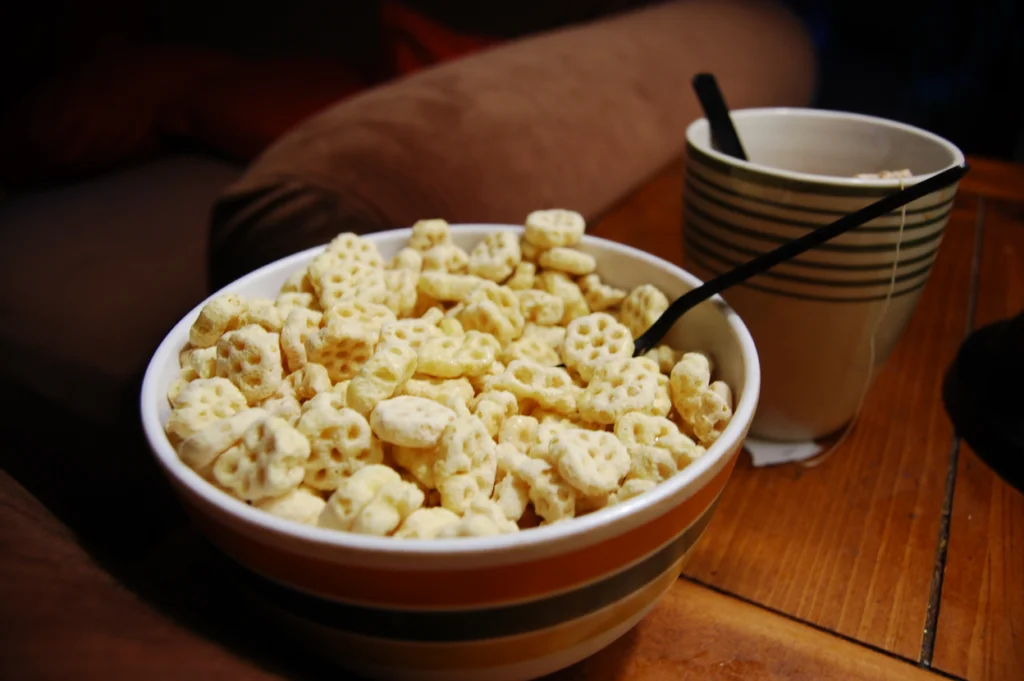
Breakfast cereals contained so much sugar they practically dissolved the milk on contact, yet they were marketed as nutritious ways to start the day. Artificial colors that would later be banned for causing hyperactivity and health concerns made food more exciting to children, with cereals, candies, and drinks competing to create the most unnaturally vibrant hues possible. Ingredients lists read like chemistry experiments, with preservatives, flavor enhancers, and mystery compounds that nobody questioned as long as the packaging featured a friendly cartoon character.
Convenience foods exploded in popularity, with TV dinners in aluminum trays heated in the oven becoming a modern miracle for busy families. Tang replaced orange juice because astronauts drank it, while artificial cheese products stretched into strings, sprayed from cans, or came individually wrapped in plastic—all considered perfectly normal alternatives to actual dairy. Fast food restaurants became weekly destinations rather than occasional treats, with no nutritional information provided and supersize portions lauded as great value rather than health concerns.
9. Playing with Dangerous Toys
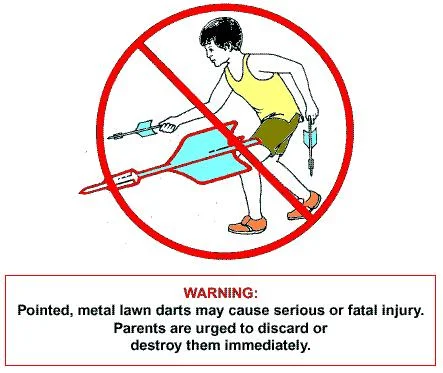
Lawn darts were essentially heavy, sharp metal spikes that children threw into the air, hoping they wouldn’t land on someone’s head or foot. Toys with small parts, sharp edges, and pinch points filled toy boxes across America with nary a warning label in sight. Chemistry sets contained actual dangerous chemicals, while woodburning kits allowed children to deliberately touch superheated metal tips to create “art” on wooden plaques.
BB guns were given as birthday presents to young children with the casual warning not to “shoot your eye out,” a phrase that acknowledged the danger while simultaneously dismissing it. Metal playground equipment heated to skin-searing temperatures under the summer sun, with slides tall enough to put children at genuine risk of serious injury. Toy manufacturers seemed to operate under the assumption that children came equipped with natural safety instincts rather than the reality of their developing risk assessment capabilities.
10. Second-Hand Smoke Everywhere
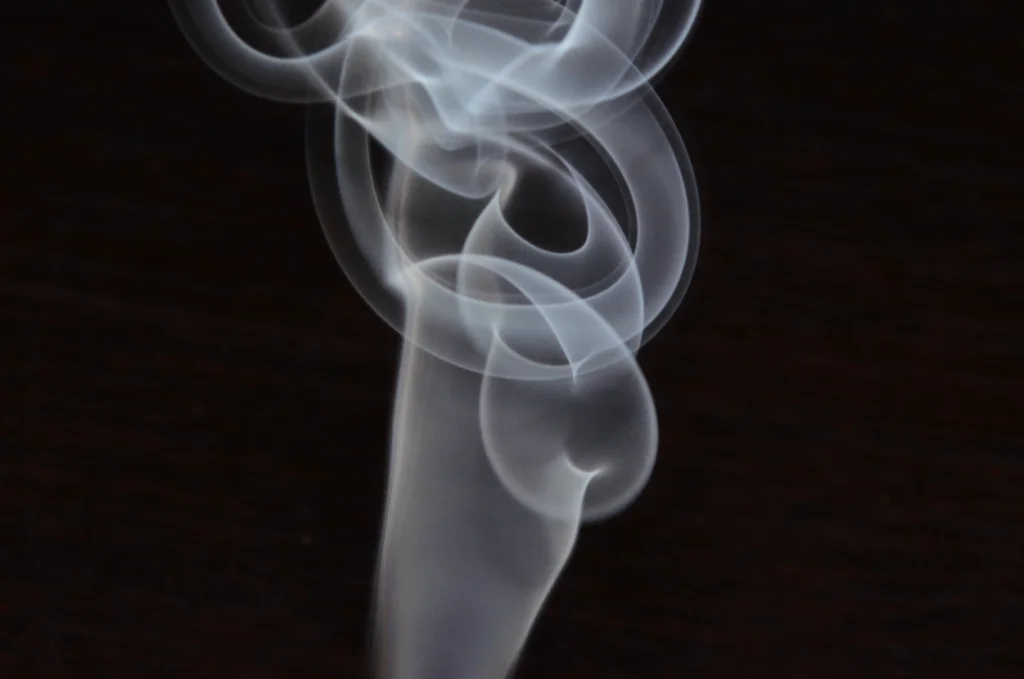
Cigarette smoke formed a permanent haze in restaurants, shopping malls, airplanes, and family cars during long road trips. Adults smoked during parent-teacher conferences, doctor appointments, and while grocery shopping, with children marinating in second-hand smoke as a normal part of daily life. Asking someone not to smoke around children would have been considered rude rather than a reasonable health precaution.
Parents smoked while driving with windows barely cracked, creating hotboxes of tobacco fumes that children couldn’t escape during family travels. Restaurants had nominal “smoking sections” separated from “non-smoking” areas by nothing more than an imaginary line, meaning everyone breathed the same recirculated air. Movie theaters, bowling alleys, and even school teacher lounges were filled with smoke that drifted into hallways where children gathered.
11. Playing in Abandoned Buildings and Construction Sites

Vacant houses, abandoned factories, and construction sites served as unofficial playgrounds where children would spend hours exploring without supervision. Climbing through partially constructed homes, testing questionable floor boards, and discovering “treasures” amid demolition debris occupied entire summer afternoons. These dangerous locations provided endless adventure potential, with rusty nails, exposed wiring, and structural instabilities adding elements of risk that only enhanced the excitement.
No “No Trespassing” sign could deter determined children from turning dangerous places into headquarters for imaginative play. The construction site at the edge of the neighborhood transformed from future strip mall to spacecraft, castle, or wilderness outpost depending on the day’s chosen adventure. Parents remained blissfully unaware of these expeditions into tetanus-inducing wonderlands, with injuries either hidden or explained away with creative stories that never revealed the actual dangerous circumstances.
12. Sunbathing with Baby Oil Instead of Sunscreen
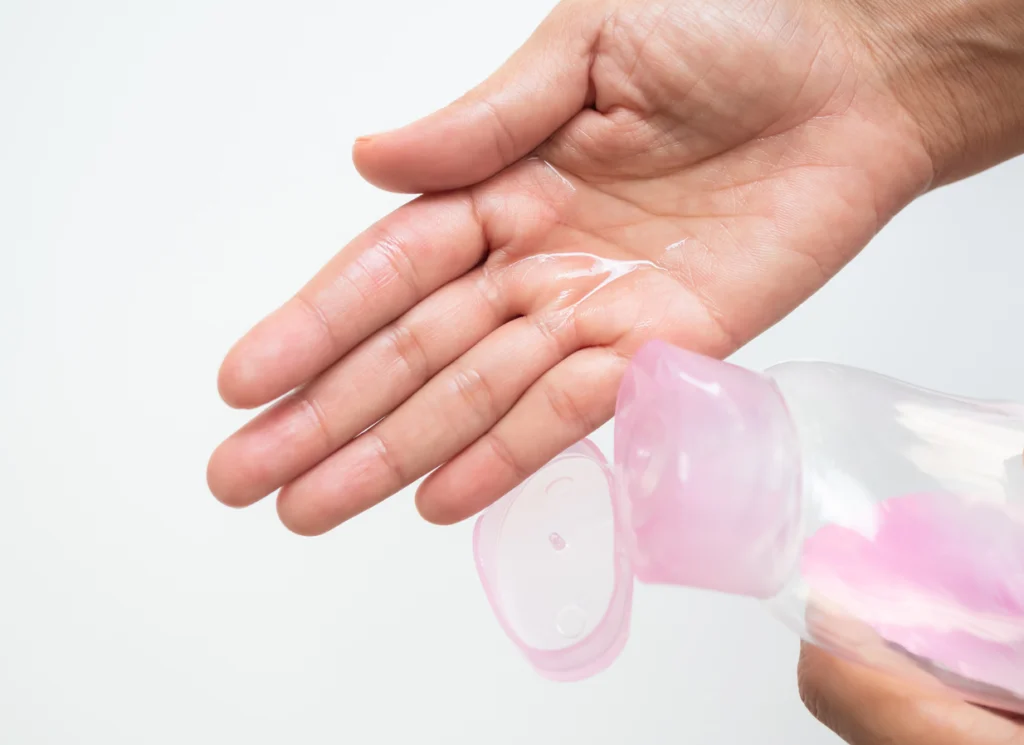
Sunscreen barely existed in the 1970s, and what was available had SPF ratings so low they would be considered tanning oil by today’s standards. Instead of protecting skin, children and teenagers deliberately enhanced the sun’s effects by slathering themselves with baby oil mixed with iodine, essentially creating a human rotisserie effect. Sunburns were considered an unfortunate but necessary step toward achieving the perfect tan, with peeling skin treated as a temporary inconvenience rather than evidence of significant skin damage.
Parents rarely insisted on sun protection, viewing sunshine as inherently healthy rather than potentially harmful. Entire summer days were spent at pools and beaches without a single reapplication of sun protection, resulting in lobster-red children who would later apply vinegar or aloe to soothe their burning skin. The connection between childhood sunburns and later skin cancer risk wasn’t widely understood, allowing generations of children to accumulate sun damage that would later cause serious health complications.
13. Making Phone Calls from Phone Booths with Actual Coins
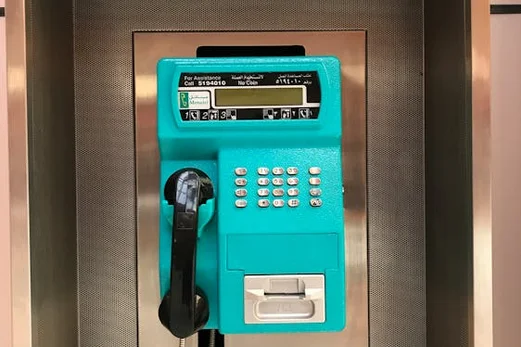
Before cell phones existed, children navigated the world with pockets full of quarters for emergency phone calls from public pay phones. Finding a working phone booth that hadn’t been vandalized, didn’t have a broken receiver cord, and actually returned your money if the call didn’t go through was a skill set that every 70s kid mastered. The phone booth—a now-extinct glass and metal structure—served as communication lifeline, meeting spot, and occasionally, impromptu bathroom when desperate circumstances demanded.
The complex etiquette of collect calls allowed resourceful children to communicate messages during the automated operator prompt without actually paying for the call. Memorizing phone numbers was an essential life skill, as there was no contact list to reference when standing in a phone booth with traffic rushing by. When the quarter supply ran out, children became adept at explaining situations to sympathetic strangers or business owners who might allow use of their phones for important calls home.
The 1970s represented a unique moment in time—after modern conveniences made life easier but before safety concerns and helicopter parenting changed childhood forever. While nostalgia paints these experiences in golden light, it’s worth acknowledging we’ve gained some valuable protections since then. Still, there’s something to be said for the resilience and independence forged in a time when children learned through trial, error, and occasionally, close calls with danger that would make today’s parents reach for the smelling salts. Maybe we didn’t have the safest childhoods, but we certainly had stories to tell!


